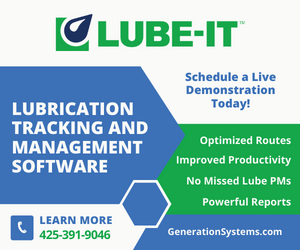In the world of industrial lubrication, the misconceptions surrounding RPVOT (Rotating Pressure Vessel Oxidation Test) have, unfortunately, cost companies millions of dollars. Imagine being faced with the daunting decision of prematurely replacing a substantial quantity of turbine oil based on an RPVOT reading below 25%.
It’s a scenario that has played out in countless boardrooms and maintenance facilities across the globe. However, this article seeks to shed light on the often-misunderstood RPVOT results and, more importantly, introduces a cost-effective alternative approach to maintaining turbine oils.
Let’s unravel the complexities, dispel the myths, and unveil a more accurate method of safeguarding your lubricant investments.
The misinterpretation of RPVOT results has recently cost companies millions of dollars in premature oil replacements.
A case in point: a Maintenance Manager of a power plant approached me last month, concerned about a low RPVOT lab result of less than 25% for their Power Turbine oil, despite it being only six years old and a substantial 28,000-liter sump. Faced with the decision of whether to replace the oil immediately, he was in a quandary.
Upon careful consideration, I recommended that he seek a second opinion by re-testing the oil sample for RPVOT, RULER (Remaining Useful Life Evaluation Routine), and MPC (Membrane Patch Colorimetry) from another reputable quality lab.
He promptly followed this advice. The results from the second lab received just last week indicated an RPVOT of 52%, RULER (Antioxidant Amine) at 67%, and MPC at 28.
This shift in approach allowed him to make a cost-effective decision, resulting in substantial savings in lubricant costs.
Globally, many companies have needlessly discarded valuable oils, costing them millions of U.S. dollars, based on RPVOT readings falling below the 25% threshold.
Companies should reconsider their RPVOT methods and avoid making costly decisions.
It’s important to understand that RPVOT measurement is an indirect method of assessing the ‘Oxidation Stability’ of turbine oils, characterized by significant variations in results due to differences between labs, testing equipment, and procedures employed by lab technicians.
The accuracy of RPVOT tests can deviate by nearly +/- 40% from the actual results.
Alternatively, direct methods are available for gauging oxidation stability in turbine oils. When addressing the issues associated with low RPVOT readings, it is crucial to recognize that the formation of lubricant varnish deposits poses a problem rather than low RPVOT values alone.
This fact is supported by ASTM 4378-13 (Standard Practice for In-Service Monitoring of Mineral Turbine Oils for Steam, Gas, and Combined Cycle Turbines), which asserts that as the oxidative stability reserve diminishes, it leads to the production of acidic compounds, subsequently forming more complex compounds.
The outcome of these processes manifests as insoluble varnish and sludge, ultimately contributing to lacquering and Varnish deposition within the critical components.
Due to the inherent nature of highly refined lubricant base stocks used in turbine oils, they are ineffective solvents for sludge and varnish. This is why monitoring the oxidation stability reserve is paramount. Any significant degree of oxidation can result in considerable sludge and varnish deposition within bearing housings, seals, gears, and pistons.
For these compelling reasons, relying solely on the 25% residual RPVOT as an indicator for oil replacement is inadequate, as the actual lubricant deposits pose a threat. ASTM’s recommendation of 25% RPVOT, in conjunction with a high acid number, signifies that the oil is nearing the end of its service life.
This mirrors the warning limit and condition provided by antioxidant levels (ASTM – D6971), which, in my opinion, offers a more direct and accurate method of assessing remaining useful life.
Therefore, antioxidant levels, as determined by the RULER test, stand out as the more direct and precise approach to measuring the oxidation stability of oil.
Given that lubricant deposits represent the primary failure mechanism, it is reasonable to consider that a combination of 25% additive levels, high acid numbers, and elevated MPC values would serve as a better indicator of oil health, surpassing the RPVOT results in terms of reliability and accuracy.
The lubrication world may need to reevaluate its practices.
The RPVOT test, long regarded as the standard, should not be the sole compass for oil maintenance decisions.
By focusing on the direct and precise assessment of antioxidant levels through methods like the RULER test, we can make informed choices that save our oils and our budgets. This reminds industries everywhere that understanding the factors behind oil degradation is key to effective maintenance and substantial cost savings.
It’s time to embrace a more enlightened approach and ensure that our lubricants serve us efficiently and economically for years.









